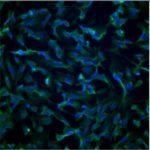Link to Pubmed [PMID] – 10518941
J. Mol. Biol. 1999 Sep;291(5):1035-54
DNA triple helices offer exciting new perspectives toward oligonucleotide-directed inhibition of gene expression. Purine and GT triplexes appear to be the most promising motifs for stable binding under physiological conditions compared to the pyrimidine motif, which forms at relatively low pH. There are, however, very little data available for comparison of the relative stabilities of the different classes of triplexes under identical conditions. We, therefore, designed a model system which allowed us to set up a competition between the oligonucleotides of the purine and pyrimidine motifs targeting the same Watson-Crick duplex. Several conclusions may be drawn: (i) a weak hypochromism at 260 nm is associated with purine triplex formation; (ii) delta H degree of GA, GT and TC triplex formation (at pH 7.0) was calculated as -0.1, -2.5 and -6.1 kcal/mol per base triplet, respectively. This unexpectedly low delta H degree for the purine triple helix formation implies that its delta G degree is nearly temperature-independent and it explains why these triplexes may still be observed at high temperatures. In contrast, the pyrimidine triplex is strongly favoured at lower temperatures; (iii) as a consequence, in a system where two third-strands compete for triplex formation, displacement of the GA or GT strand by a pyrimidine strand may be observed at neutral pH upon lowering the temperature. This original purine-to-pyrimidine triplex conversion shows a significant hypochromism at 260 nm and a hyperchromism at 295 nm which is similar to the duplex-to-triplex conversion in the pyrimidine motif. Further evidence for this triplex-to-triplex conversion is provided by mung bean-nuclease foot-printing assay.

